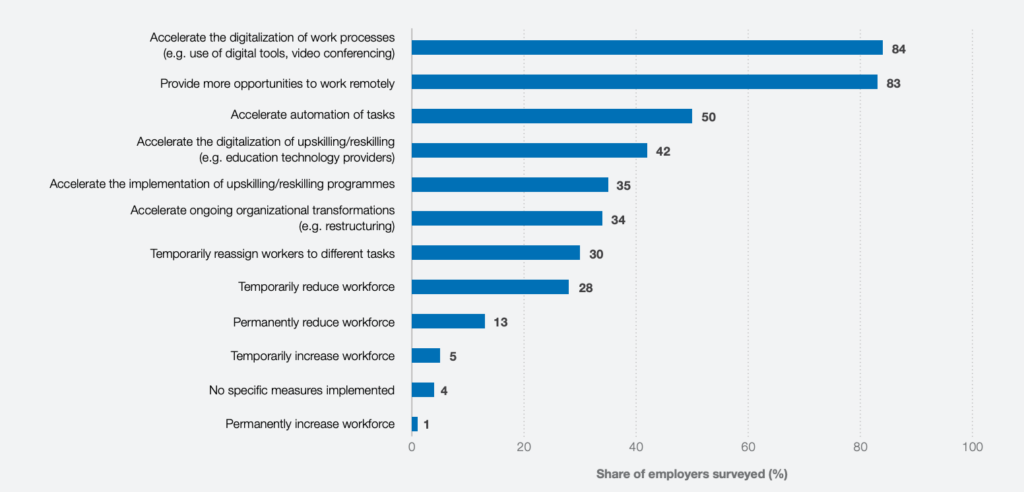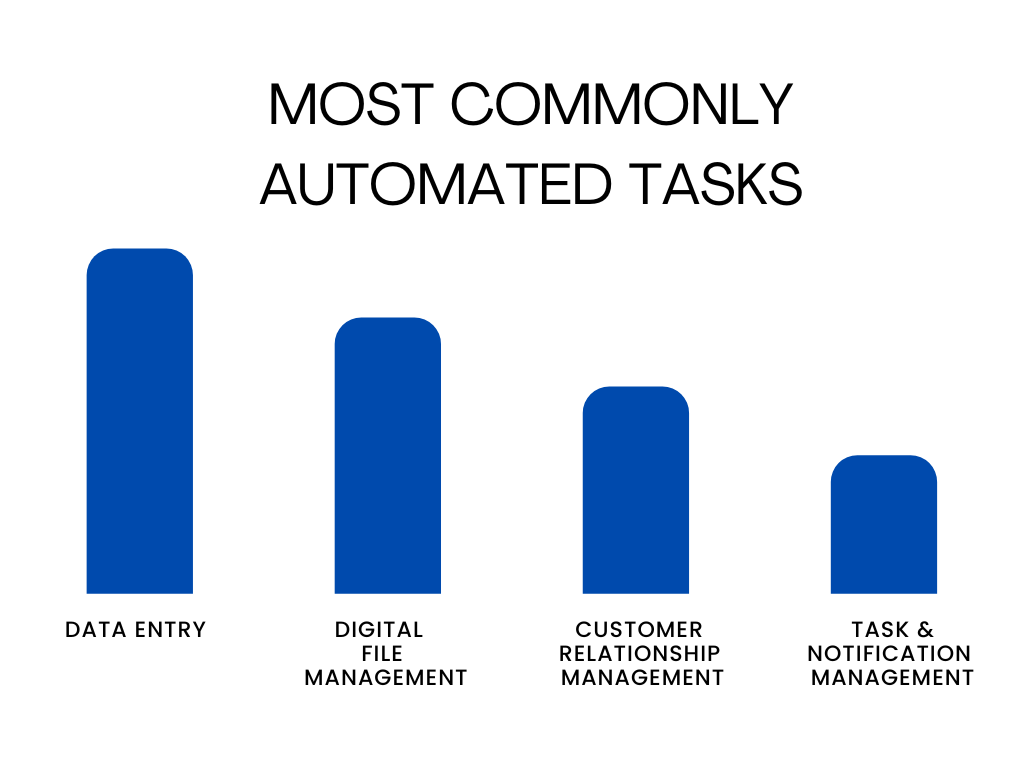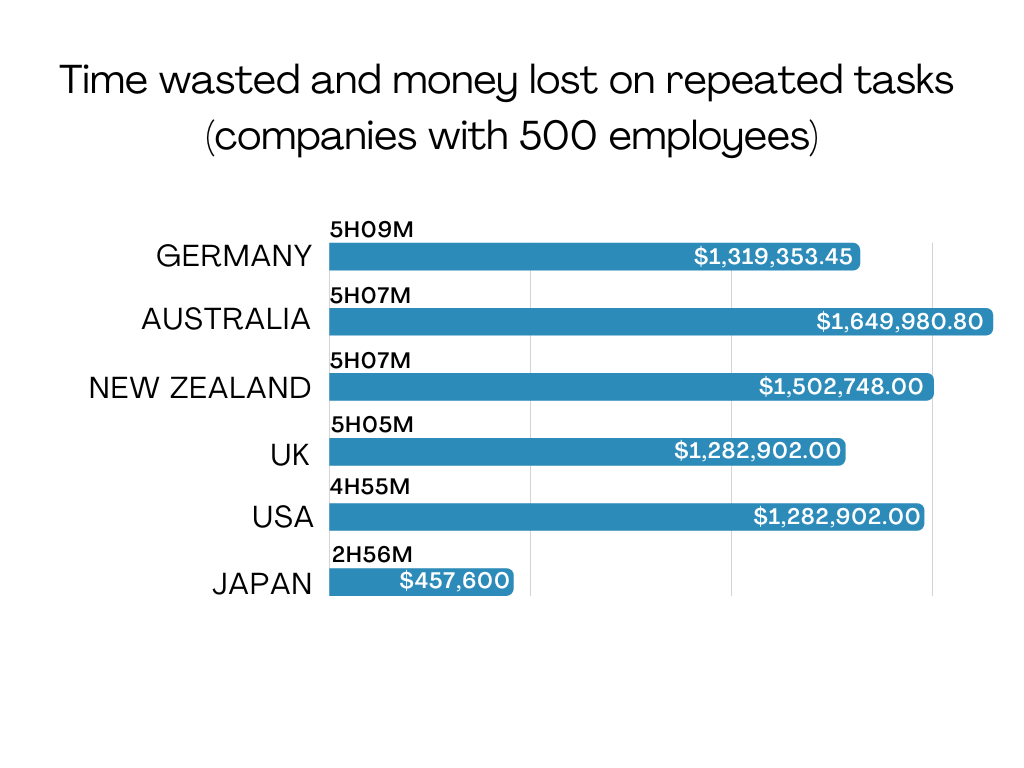
IT workflow automation is a game-changer that can significantly enhance your organization’s efficiency, cost-effectiveness, and overall operations.
By harnessing automated workflows to streamline IT processes, you free up valuable resources to redirect them to other departments. This means fewer IT interventions for routine tasks like password resets and data backups, ultimately reducing headaches for your team and enhancing the customer experience.
But how impactful can workflow automation be for the IT industry? The answer might surprise you. But first, a quick overview of what it entails.
What is workflow automation?
Workflow automation relies on technology, such as workflow automation software and digital systems, to automate and streamline an organization’s task completion, processes, and activities. It involves designing, managing, and optimizing sequences of steps and actions to complete specific business processes or workflows.
Workflow automation aims to reduce manual intervention, minimize human errors, improve efficiency, and enhance productivity by automating repetitive, rule-based, or standardized tasks. This technology typically automatically routes tasks, data, and information to the right people at the right time, often based on predefined rules or triggers.
In essence, workflow automation simplifies complex processes, ensures consistency, and accelerates the pace of task completion, ultimately leading to cost savings and improved overall performance within an organization.
And with the emergence of no-code platforms and AI, business leaders have automation on the brain. 50% of respondents surveyed by the World Economic Forum say they intend to accelerate the automation of tasks in their organization in the near future.

Rule-based vs. AI-powered workflow automation
Modern workflow automation comes in two categories: rules-based “deterministic” logic and AI-powered “probabilistic” reasoning.
Rules-based logic can file a document away depending on hard facts like the date, its unique ID, or whether or not all parties signed it. AI has traditionally been used to automate subjective decisions in Know Your Customer (KYC) processes. For example, to answer questions like “Is this an authentic, live video of the customer?” However, new large-language models like GPT-4 can carry out complex tasks around manipulating text.
If you want to summarize chats in your Salesforce notes, a chatGPT-powered Salesforce Connector can instantly write up detailed notes and summaries that would take hours of mindless typing every month.
By including AI in your low- or no-code workflows, you can eliminate the “last mile” of subjective decision-making that previously prevented you from fully automating these routine processes. That means you and your team can spend more time on complex problems that demand unique expertise.
IT workflow automation: Key insights
Workflow automation plays a crucial role in the IT industry by streamlining and optimizing various aspects of IT operations. In IT support and helpdesk functions, automation can handle routine tasks like password resets, system updates, and ticket routing. Automated workflows help reduce the burden on IT staff, ensure faster response times, and improve user satisfaction.

In software development and deployment, workflow automation can automate code testing, deployment, and monitoring processes, leading to faster development cycles and more reliable software releases. Additionally, in IT security, automation can continuously monitor network traffic, detect security threats, and trigger immediate responses, enhancing overall cybersecurity posture. Overall, IT workflow automation drives efficiency, reduces human errors, and allows IT professionals to focus on strategic tasks and innovation.
Take note: In one of our recent blogs, we covered operations automation and had an in-depth view of the operations workflows that can be automated.
Shadow IT: The dark matter in your organization’s tech stack
Workflow automation helps to tackle the so-called “Shadow IT.” With 85% of IT professionals surveyed saying this is a big concern and companies spending an average of $135,000 a year dealing with the consequences of shadow IT, this is one of the biggest problems that workflow automation can solve.
In simple terms, Shadow IT is the patchwork of solutions employees have implemented to complete their work as quickly and easily as possible without consulting the IT department. Shadow IT is the “dark matter” in any organization’s tech stack: it’s everywhere and unobservable. Shadow IT practices pose risks to operational efficiency, cybersecurity, and compliance with the law.
As workflow automation makes processes more efficient, it removes the need for these hidden and less secure workarounds, enabling staff to finish their work with minimal effort and without the risks associated with shadow IT and ultimately enabling staff to complete their tasks quickly without the risks associated with shadow IT.
7 benefits of IT workflow automation for tech gurus
Here are the seven ways workflow automation can benefit your IT team while improving operations and employee experience.
1) Improved process compliance
Companies are under more scrutiny than ever about how their systems handle user data, such as identifiable information, financial and medical records. If regulators come and ask how you’re handling that, you better have a clear answer. Issues like Shadow IT solutions make this impossible. So, how can you stop them from growing around your tech stack?
Low- and no-code workflow automation, overseen by the IT department, allows employees to set up the necessary authorized solutions without creating security and compliance headaches. By running standardized processes on a secure platform—itself compliant with GDPR, HIPAA, PCI DSS, etc.—IT teams can rest assured that their customer data isn’t at risk for the sake of convenience.
2) Cost savings
airSlate’s latest IT & Ops report revealed that 41% of IT professionals surveyed think they spend too much time on administrative work. That’s unsurprising, considering 71% have seen layoffs in the past six months. These layoffs are supposed to cut costs, but every hour IT staff spend on laborious, non-specialist work has a price. By partly or wholly automating these tasks, more of the IT budget can be invested in strategic upgrades rather than routine maintenance.
Workflow automation also enables your existing employees to bypass the tasks that often hamper their work rate and delay the completion of projects. Research has shown that employees can waste as much as five hours per week on repetitive tasks, leading to a financial loss of up to $1.6 billion annually.

As the marginal gains from workflow automation stack up, they increase the speed of project completion, cutting down the time-to-market for your products and allowing you to see faster investment returns.
3) Greater accuracy
Workflow automation tools have proven to help IT teams complete tasks with much higher levels of accuracy: rule-based workflows are executed the same way every time, and machine learning systems can make snap and accurate judgments about vast datasets.
A high level of accuracy in your operations is essential for meeting the targets established in service level agreements (SLA) for your products, reducing the negative impacts on customers and other stakeholders. In this way, automation helps to reduce the costs associated with error correction and thorough quality assurance.
As well as helping to limit errors during data input, automated processes can form part of your model drift detection efforts, analyzing models for inaccuracies that could deteriorate their predictive power.
4) Improved employee satisfaction
Not only does reducing the number of repetitive tasks your employees have to carry out save you time and money, but it also improves the satisfaction levels of said employees.
For example, before implementing document workflow automation, San Diego’s New School of Architecture & Design had employees struggling to process applications. Everything was on paper, forms would go missing, and staff would spend time struggling with forms with empty fields or confusing handwriting.
A simple document automation solution had a significant impact on staff motivation. Digitizing the application process meant forms were consistent, clear, and easy to deal with. Where automation can’t completely eliminate admin processes, it can make them go by much more smoothly.
With no-code workflow automation tools, staff with minimal technical knowledge can install, manage, and monitor processes as well as build apps suited to their needs without involving the IT department. Citizen development can be safe, effective, and empowering for teams using low-code or no-code automation.
Fostering citizen development improves employee satisfaction across the board, whether it’s admin staff having the solution they need or IT teams spending less time fixing inefficient systems.
5) Increased productivity
airSlate‘s latest IT & Ops report suggests that 94% of teams using no-code workflow automation feel more productive. Introducing workflow automation enables organizations to optimize IT processes, streamlining workflows and ensuring that only the minimum amount of time is spent on individual tasks.
As a result, the number of tasks completed in a day, week, or month grows, reducing the time needed for more significant projects, increasing output, and improving ROI.
For example, using an autoloader as part of a data ingestion framework can significantly reduce the time spent manually ingesting data into your data lake house for analytics purposes. An automated workflow will ensure that data is ingested efficiently from various applications, allowing you to devote time to other relevant tasks while the process is completed.
6) Smoother communication
Yet another benefit of leveraging workflow automation for IT teams is improved communication with peers, customers, and other stakeholders. For example, you can streamline communication between the development and operations teams. Reducing silos will get rid of bottlenecks and speed up your product launches.
Not only does workflow automation reduce the need for constant communication, but it can also streamline the communication process. Automated features, such as automatically generated emails or automatic feedback requests, reduce the time team members must spend typing out and sending communications, allowing them to focus on higher-value tasks.
Workflow automation is beneficial when communicating with customers. Integrating CRM software with email marketing tools enables more effective marketing personalization while reducing the time spent generating emails. Instead of turning to shadow IT, the sales and marketing teams can build automated workflows right where the IT team can see them. This makes discussing what’s being implemented much easier, especially in a remote organization.
7) Easier collaboration
Remote work and cloud software have risen in tandem. With teams distributed on their networks and devices, employees’ software and hardware creep into your organization’s tech stack.
Streamlining remote collaboration is simplified when you consolidate all IT-approved solutions into a single platform. This approach simplifies remote collaboration by reducing the need to piece together multiple apps and services. Instead, everyone can work and share their progress on a unified central platform. Consequently, projects of any scale can run more smoothly, adhere to timelines, and stay within budget.
Leverage the power of workflow automation in your IT team today
Workflow automation offers numerous advantages for IT teams, especially in the face of tightening budgets and expanding workloads. The reduction of routine administrative tasks for specialized IT personnel significantly adds value to operations.
Furthermore, companies can revolutionize collaboration within their teams and with IT through the utilization of low- and no-code automation platforms. These platforms empower teams to develop their solutions without introducing security or compliance concerns, sparing the already overstretched IT department from risky shadow IT initiatives.
Most notably, these tools enhance team collaboration by consolidating their solutions within a single system. This streamlines the integration process, reducing the burden on IT staff and allowing them to concentrate on tasks that demand their unique expertise.

